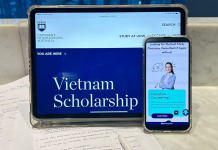Leung also took up the issue of on-shore electricity supply in his maiden policy address, a timely measure as the new Kai Tak Cruise Terminal is due to open around June. Space has been reserved to install an on-shore electricity facility at Kai Tak although the HK$14 billion funding proposal is still under consultation.
When ships dock at the Kai Tak Terminal, they need to keep burning fuel to provide energy and electricity. It causes heavy air pollution but an on-shore supply would solve the problem and ensure there were no emissions in the immediate area.
Simon Ng Ka-wing, head of Transport and Sustainability Research at Civic Exchange, says shore power will benefit residents in the Kwun Tong area the most as there will be no emissions at the site. Instead emissions will be transferred to power plants in rural areas, where pollution is widely dispersed and easily monitored.
However, Ng says the setting up of shore power is not an easy task. Not all cruise liners are equipped with the facility for shore power, and there are technical difficulties with power distribution and wiring. He adds that the ownership by the government and operation by the private Worldwide Cruise Consortium could lead to inefficiencies in any potential arrangement. Within the government structure, there are further divisions, with the Hong Kong Tourism Board taking a leading role. This means for instance, that the Environmental Protection Department does not have a say in the construction process.
In other words, on-shore power is not going to provide a cure for all or even some of Hong Kong’s marine pollution problems, at least not in the short-term.
“It will take at least two to three years for on-shore electricity to be set up in Hong Kong. But this [switching to low sulphur fuel on the other hand] provides a quick fix,” says Ng.
This helps explain the idea of establishing Asia’s first Emissions Control Area (ECA) – a maritime territory where all ships are required to burn fuels with a maximum of 1 per cent sulphur. There are currently only two such areas in the world, one in the United States and the other in the Baltics.
According to Tony Lee Yu-tao, senior environmental protection officer at the Environmental Protection Department, the Hong Kong, Shenzhen and Guangdong governments started discussing the possibility of a pan-Pearl River Delta ECA last September. However, he says the project is complex and involves many stakeholders, so there is no timetable yet.
While the battle against maritime pollution is gaining ground, the public’s response to the government proposals to reduce roadside pollution has been mixed. The government is to launch a HK$10 billion programme to eliminate old diesel vehicles which will mean some 80,000 pre-Euro and Euro I to III vehicles will be phased out to meet the 2015 and 2020 emission reduction targets.
The term “Euro” refers to the European emission standards that define the acceptable limits for exhaust emissions of new vehicles sold in European Union member states. The latest standard is Euro V. Old diesel vehicles with pre-Euro and Euro I to III emission standards are highly polluting.






































